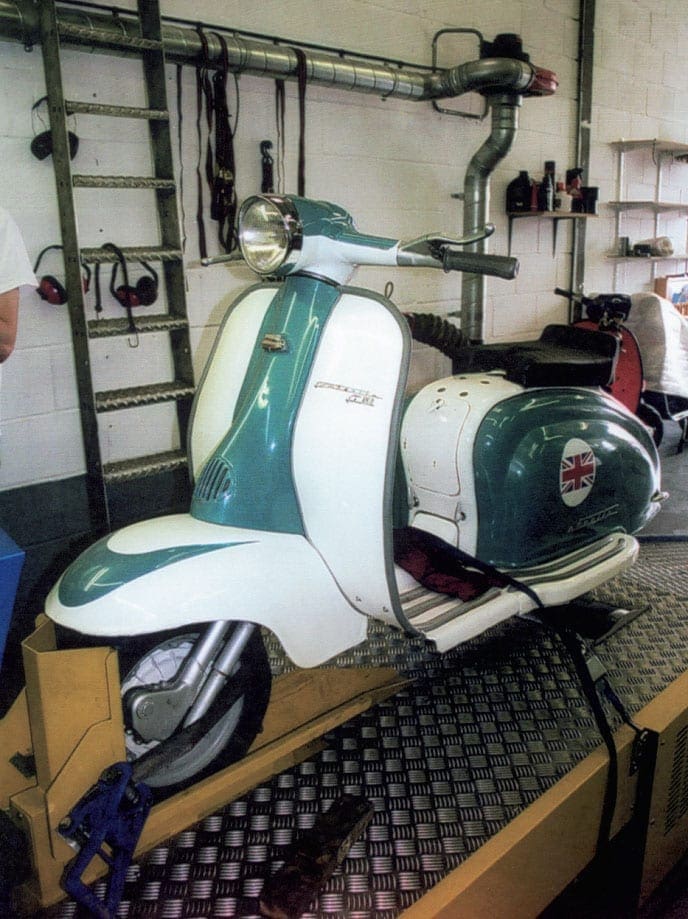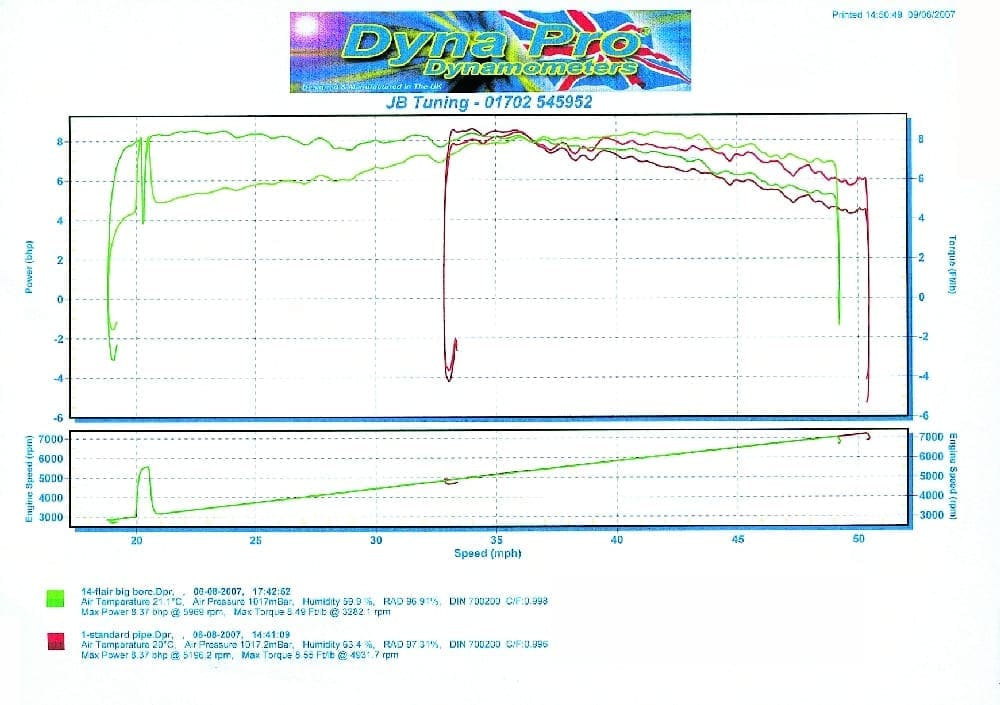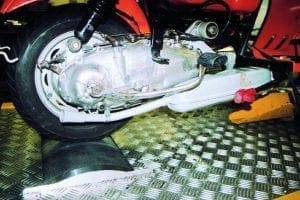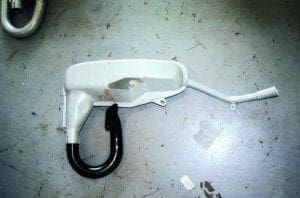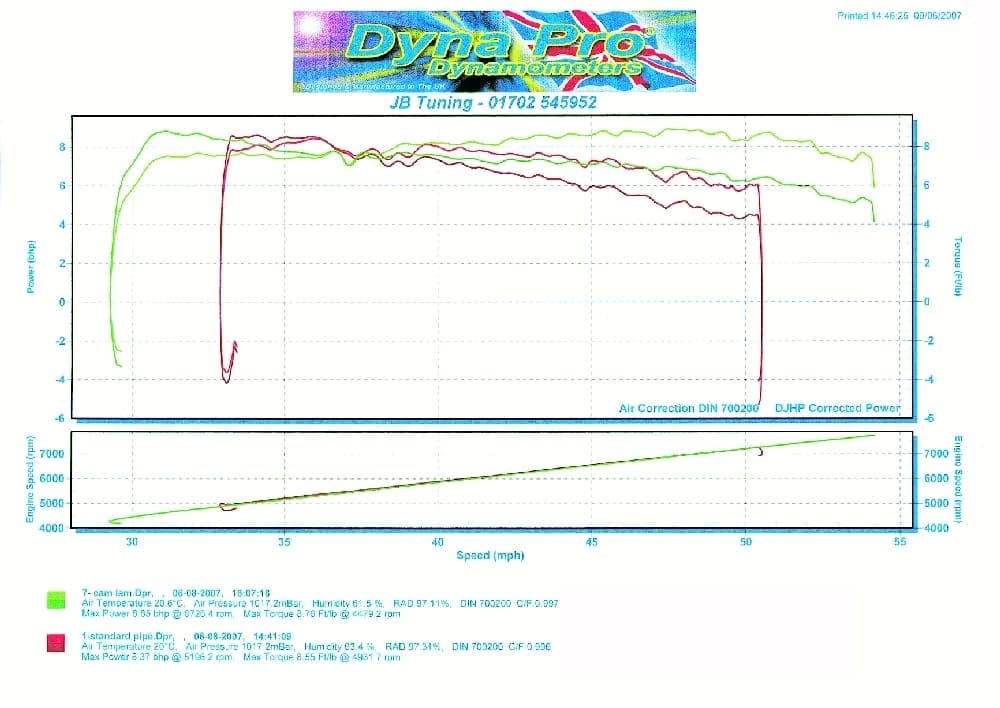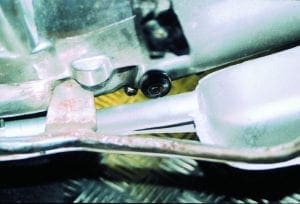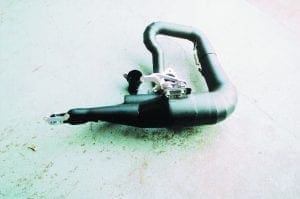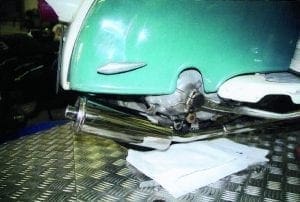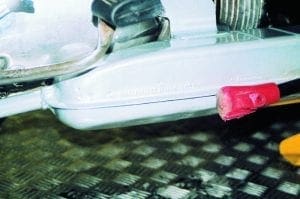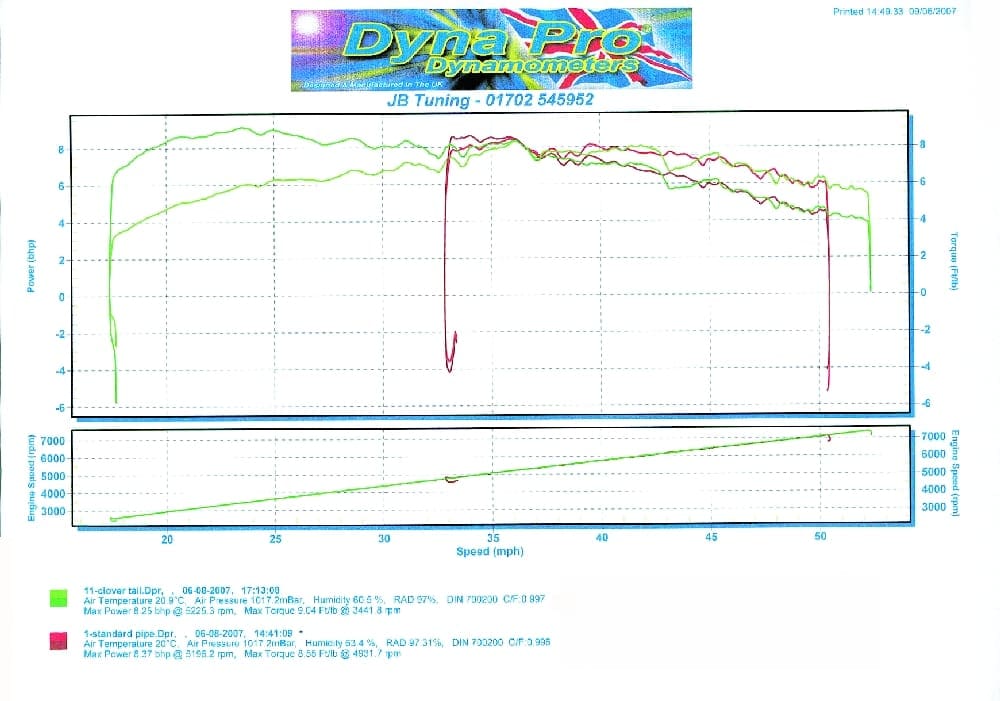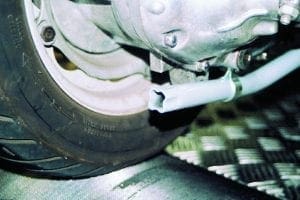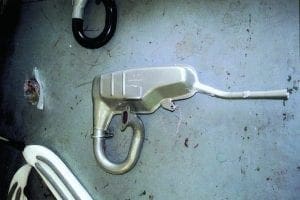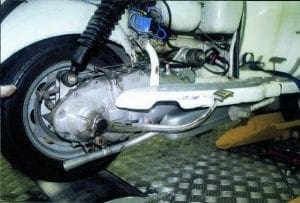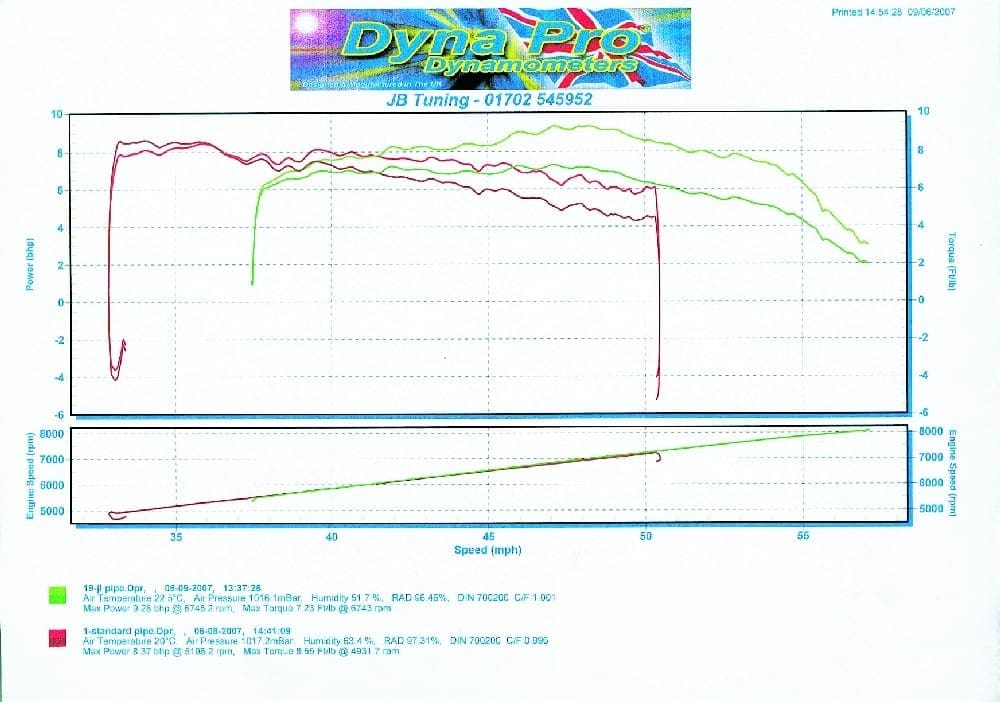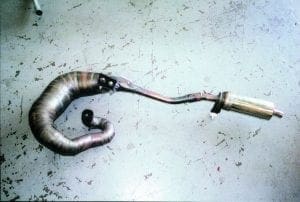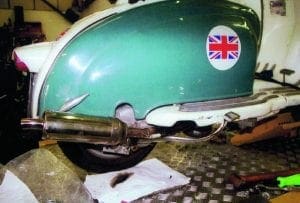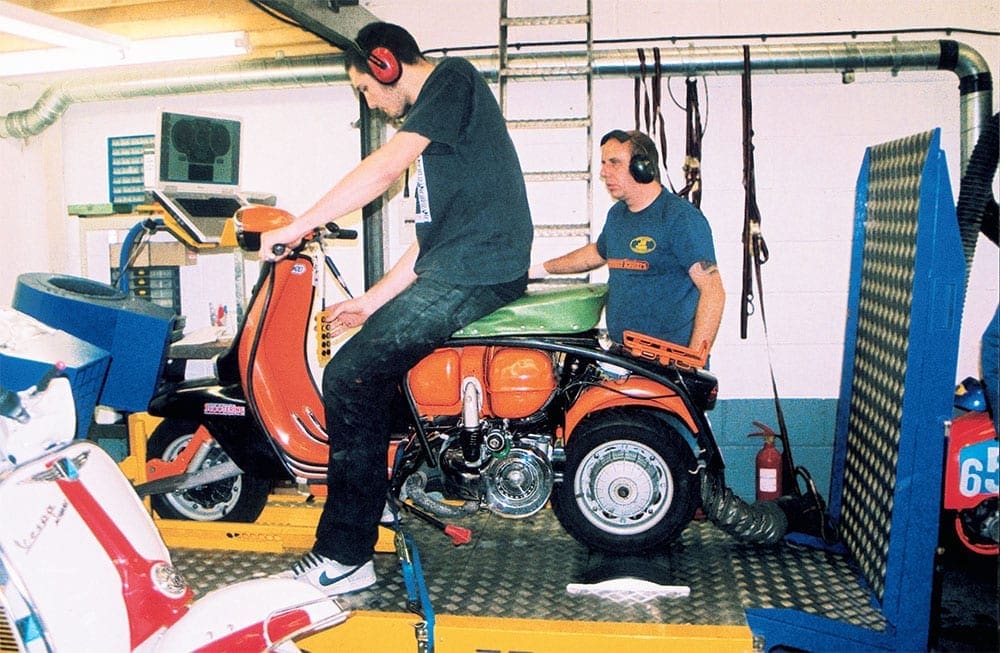Many moons ago, or so it seems, we began putting together an article on performance enhancing exhausts to suit Lambretta Series 1 and 2 scooters.
As you may imagine, these things are never easy. For a start, within weeks of contacting the various exhaust manufacturers it became apparent that it wasn’t just Scootering who were looking at this potential problem, as they revealed numerous pipes being developed and due for release shortly, thus delaying us somewhat.
Customer demand for similar products was the next setback, with exhausts produced destined for those that had paid their hard-earned first, but eventually we accumulated a variety of pipes to play with.
Criteria
The criteria for inclusion is this test was simple; with the growing popularity of Series 1 and 2 Lambrettas these days, more and more people are looking for such exhausts to fit their steeds, a number of which have been modified in the engine department so as to be used safely on 21st century roads.
However, the majority of ‘expansion’ pipes currently available have been designed for the Series 3 range of Lambrettas, necessitating the mutilation of the right rear-footboard on a Series 1 or 2, defacing its original condition —which considering their rarity today is not the best idea.
A lot of the famous names are absent from this test, because they don’t meet the criteria, including Scorpion who actually use a Series 2 in their advert yet neglect to mention bodywork needs cutting to fit their exhaust!
Another one that fell by the wayside was the offering from ScootRS in Vietnam, who together with Saigon Scooter Centre must be credited with being quick off the mark when it came to dispatching their product c for testing.
Unfortunately the ScootRS exhaust proved extremely difficult to separate the downpipe from the main body, despite our best efforts with rubber mallets, heat and lubrication. We then tried to fit the pipe complete so we could at least test for power, but it wasn’t too clever at the barrel end of things either.
ScootRS tell us they’ve not had this problem before and that there are satisfied customers all over the world, and it has to be said I have seen their exhausts on numerous scoots. Strange… Never mind though because with any luck we’ll have got it apart for the TS1 test later!
The test
In theory it was easy, but as time marched on things became complicated. JB Tuning of Southend kindly agreed lo let us have some dyno time at the beginning of the year when things were not too busy for them, but of course by the time we were ready their diary was pretty full of scooters being prepped, checked and repaired for the race and rally season.
Never the less John honoured his agreement and found us time, and Paul Karslake kindly loaned is his Series 2 Li that was fitted with a standard 200cc engine. Ideal for the test, except that once on the dyno it was found to be running weak. Too weak in fact to be corrected via carb adjustments, suggesting that the problem was a little more serious. All we could then do was spend the day bolting on the various exhausts to check their fitment against panels and footboards.
The spare guinea pig scooter was brought on from the subs bench, my Li Series 3 that readers may remember us building a few years ago in the numerous ‘Resurrection’ articles at the time. Fitted with a 150cc engine casing it boasts a SR185 top end, standard 22mm Dell’Orto carburettor (with filter and airbox) and electronic ignition. Again we feel a fair representation as small block engines are being used more and more these days.
And so thrashing the scooter on the dyno could commence. For each exhaust, once warmed up the scooter was ‘ridden’ through all four gears and a reading also taken of a third gear roll on, the results of which have been published here.
Please note that in each graph, the red lines show the standard exhaust used for the base run and against which each other (green) is compared (light shades = power, dark = torque).
Casa Lambretta Big Bore Clubman
Type: Standard style of steel exhaust, made in Italy
Cost: £130
They say: Really an exhaust for the TS1225, it’ll be interesting to see what this does here.
We say: A bigger downpipe and bore equates to marginally more power than the standard Casa Lambretta Clubman exhausts over the page, although the relationship to torque on the graph is not so good. The downpipe features a tight curve making it a bit of a pig to fit (we had to remove carb and cowling), the body didn’t line up too well and bracket underneath the engine was a taxi ride away from lining up. Not a bad performance though, it tries hard early on and as such we’re eagerly anticipating the results in the TS1 test which is more this exhaust’s cup of tea!
Availability: Any time now from Scooter Surgery (0208 748 0882 or www.scootersurgery.co.uk), just waiting for the manifolds.
Sito Ancillotti
Type: Standard style of steel exhaust, made in Italy via Tino Sacchi.
Cost: £109.95
They say: The Ancillotti is an all-rounder aimed at all engines, tuned and standard, for people that want to retain the standard look, and you can remove the head cowling without removing the downpipe.
We say: While not the best power or indeed graph, this didn’t embarrass itself really on performance and it did rev on as they suggested. However, this exhaust let itself down on fitment. Averagely easy to fit, the tailpipe bracket is loose and therefore adjustable, which is nice. Panel clearance was, as expected, okay, but the body of the exhaust butted up tightly onto the oil level plug, meaning you cannot undo it without first removing the exhaust. Cam Lam told us: “We think it’s a small price to pay fora good quality exhaust, but it is something that Tino will be looking to rectify in future production batches.”
Availability: Now through Cambridge Lambretta, 01223 516662 or www.lambretta.c.o.uk
B-Race Stealth
Type: Intriguing snail-like design, unobtrusive, performance pipe, handmade from 1.6mm mild steel in the UK.
Cost: £290 inc VAT (and UK postage)
They say: Design from the outset has been to offer subtle unobtrusive style while still achieving maximum performance both in horsepower and torque gains, with unique sealing at the slip joints to ensure no unsightly mess, and ground clearance/cornering lean angles.
We say: Supplied with all the brackets in place and just finger tightened, this was the easiest exhaust of the lot to fit once the TS1-style barrel stub was fitted, although this required some trimming of the nearby barrel fins (as suggested by B-Race).This makes removing the exhaust a doddle compared to those with one-piece U-bends. B-Race include comprehensive fitting instructions with the exhaust. Once in place the exhaust is unobtrusive. WhIle giving the best results here, this pipe, like a Taffspeed, is not a big revver, which should equate to longer life expectancy for engine components especially on more highly tuned engines, which is what it was designed for and where we expect it to excel. A bit too pricey and overkill for our cheap scooter though I feel.
Availability: Problems with suppliers not delivering delayed first batch, but second lot should be available by July 2007. 01822 617624 or www.b-racetuning.co.uk
Saigon Scooters Fresco Copy
Type: Under kick-start stainless steel expansion, based on old Italian design, 42mm U-bend, manufactured in Vietnam by Saigon Scooter Centre
Cost: Powder-coated = U$D135, stainless steel = U$D185
They say: Not a lot.
We say: A bit of a surprise this one, it must be said. The graph revealing second highest power of the day, a respectable amount of torque, and spreading it fairly well too. One concern with this is possibly a trait from the Frescos of old, and that’s the fixed mounting points on the engine casing. They needed a bit of a tug to get them all into plate and I couldn’t help wondering how long before casing studs started pinging out. Hopefully I’ll be proved wrong. The other is clearance. This muffler looks larger than the original Frescos and we found that when using a Series 3 rear shocker, it touched on the side panel when the scooter was two-up. Using the slightly longer Series 2 shocker was better, but combine a well-loaded Series 1 or 2 scooter, this exhaust and a road full of potholes and I wouldn’t be surprised to see paint on the tail can. If you can cope with these minor annoyances, and should you not get stung for import duty, then this appears to be another good value for money exhaust, with a pleasant Fresco tone!
Availability: Via the website, steel powder coated in stock, complete stainless to order (two weeks). www.saigonscootercentre.com
Casa Lambretta Flare Tail Clubman
Type: Standard style of steel exhaust, made in Italy
Cost: £130
They say: Clubman for smaller capacity. Improved bottom end and mid-range with approx. 500rpm rev-on beyond others.
We say: Exactly the same body as the standard looking clover tail, just a different tailpipe. Downpipe required a little grinding before it would fit the barrel and unlike other ‘standard’ style exhausts here the U-bend has so tight a bend that cowling and carb needed removing to fit it. Tailpipe has useful sliding clamp, bracket under engine casing not faraway at all requiring minute amount of filing to get bolt in. Body even has IGM number to keep anoraks happy! Not particularly high amounts of power, although the graph shows relationship to torque suggests this holds it better.
Availability: Scooter Surgery (0208 748 0882 or www.scootersurgery.co.uk)
Casa Lambretta Clover Tail Clubman
Type: Standard style of steel exhaust, made in Italy
Cost: £130
They say: “A clubman for a larger capacity and torquer engines, less bottom end but 1000rpm rev on over rivals.”
We say: Exactly the same body as the flare tail, just a different tailpipe that copies the original Innocenti design. Downpipe required a little grinding before it would fit the barrel and unlike other ‘standard’ style exhausts here the U-bend has sought a bend that cowling and carb needed removing to fit it. Tailpipe has useful sliding clamp, bracket under engine casing not far away at all requiring minute amount of filing to get bolt in. Body even has IGM number to keep anoraks happy! Nice sound, not particularly high amounts of power, but torque is respectable and what this pipe offers is a generous spread suggesting touring rather than racing is its forte here, although remember it’s twice the price of the AF Clubman.
Availability: Scooter Surgery (0208 748 0882 or www.scootersurgery.co.uk)
AF 42mm Clubman
Type: Standard style of exhaust, big bore, zinc plated mild steel, manufactured exclusively for AF in India
Cost: £60 RRP
They say: Well-established design originally pioneered by Arthur Francis and continued lobe produced today with slightly altered design for mass production. More recently we have also altered the material to a zinc plated mild steel to help against corrosion, and increased the gauge of the internal baffles to increase the robustness.
We say: Well-proven pipe loved by many and as with all the standard style exhausts here, it does not foul any bodywork. The bracket underneath the engine didn’t quite line up but all that was needed here was a little filing of the hole to gel the bolt in, generally easy to fit though. Offered best power and torque of the standard style pipes, which helped us conclude a good value for money exhaust.
Availability: Now, from AF Rayspeed (01944 710693 or www.afrayspeed.co.uk) and numerous other dealers.
CL Race 2
Type: Sports exhaust, manufactured in Europe by JL for Cambridge Lambretta
Cost: Approx £230
They say: This is aimed at tuned engines on Series 1 and 2s. We think that the JL road and race pipes are the best value for money pipes on the market, especially for an European product, light and easy to fit.
We say: Still a prototype, the signs are good though. A TSI-like stub mounts to the barrel requiring fins to be ground away a little. If you mount it exactly right, it will clear the floorboards, but it’s tight. On the road we suggest you watch out for big potholes just in case! Fitting therefore requires patience, and the removal of the engine side casing if you use studs as the tail-can bracket requires the use of two long bolts. The graph shows that this exhaust is a bit too much for this mildly tuned engine. lt sounds great and is the expansion of choice here if you want higher revs. The CL Race will come into its own on a TS1 we feel.
Availability: Production will begin when we return their prototype! Cambridge Lambretta 01223 516662 or www.lambretta.co.uk
Results
Before we get on to the performance, a word about fitment. Over the period of this test different exhausts were fitted to different engines, which in turn featured different kick-starters. These varied from Series 2 to 3, some better fitting than others. As a result we found some ‘sloppier’ fitting kick-starters scraped the tailpipes of the standard type exhausts with their ‘return buffer arm’ on occasion, while others didn’t. Something to consider at home.
Secondly, an area we have not commented on was the finish of the exhaust pipes because firstly some were supplied in prototype form, and secondly there was no time to ‘carefully run in’ some pipes as manufacturers suggest to keep the ‘coating’ intact.
And so to the meaty bit. It is important when looking at the graphs to appreciate all of what the dyno tells us, and not just the line you want to repeat down the pub (usually mph!). Power and torque are the keys here ladies and gents. As such, what this test has taught us if nothing else is that like ‘horses for courses’, different exhausts suit different scooters. Balls out fast riding, drinking a tank full of fuel every 30 miles, tripping speed cameras left right and centre? Then you’ll be looking for different characteristics to the couple that want reliable two-up touring on a scooter capable of dragging everything including the kitchen sink around, uphill and down vale.
Another point worth remembering is that if your use is touring, then ordinary steel exhausts are easier to weld than stainless steel items, thus you’re more likely to find someone who can fix it (even if only temporarily) if you’ve snapped a pipe in the middle of nowhere. Oh and despite having to trim fins to fit the TS1-like barrel stubs of the JL and B-Race, this is a small price to pay I feel for improving what is a terrible design flaw of the Lambretta and making it far easier to remove the exhaust in the future.
For a second opinion beyond the conclusions we’ve drawn, we asked John Balcombe of JB Tuning, which as a long time scooter mechanic, tuner and racer is a pretty experienced one.
“The Casa pipe makes a wider spread of power at a wider rpm suggesting it would be good for two-up touring, the flare tail having slightly more torque although the clover tail is more consistent. Out of all the standard looking pipes here though the AF is the one. It has the power and the price. The Sito Ancilotti one is okay, but it’s still no better than the AF power-wise, though it does rev on a bit, which suggests on a Stage 4200 the Sito may be the better of the two.
“On the expansion pipes the B-Race has the highest power and the graph suggests it would be great for touring, two-up and pretty good on a TS1. In fact it should be good on a standard 200 as well. I’m surprised that the Saigon Fresco copy has next best power, but the graph shows a fairly parallel line between the power and torque, the revs pull low rpm and it does rev on a bit. It does seem good value for money. As for the CL Race, well the engine is a bit small for this pipe, it’s too far up the rev range really. The power band is quite narrow and you can tell it was designed for something more powerful.”
So I asked John, if money was no object and the design of the exhausts incidental, what would be his top four for performance. he replied: “B-Race, then CL Race, then AF Clubman and then the Saigon Fresco copy.”
As for me, well I went home with the AF Big Bore fitted, in my opinion a good value-for-money pipe that fits easy and works well, which incidentally was John’s choice when asked what he would fit if he had this scooter and was after value for money – the winner I think therefore today. Yes I did have desires for one of the expansions, but I think them a little overkill for my Li.
Dean at JB was also trying to think of an excuse to justify taking the B-Race home to put on his Lambretta but apart from the fact we needed it for the next part of our test, my missus has had her eye on one for her TS1 for months now!
Thanks to Paul Karslake, John and Dean at JB Tuning in Southend-on-Sea (01702 545952), and congratulations to Dean who only managed a minor burn to his arm compared to the two large blistering affairs I clumsily accumulated – it’s true, stainless steel does take longer to cool down!
The next part of this exhaust test will appear in Scootering shortly…

